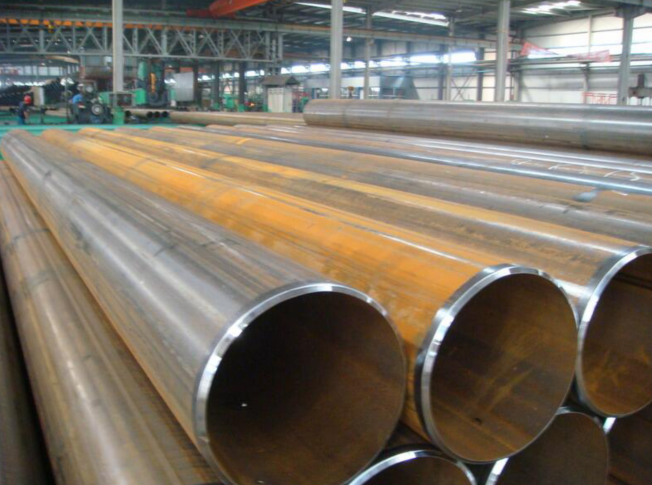
Comparing ERW and LSAW Steel Pipe Welding Processes
ERW steel pipe adopts high-frequency resistance welding process, using hot-rolled wide-band steel coils as raw materials, and undergoes pre-bending, continuous forming, welding, heat treatment, sizing, straightening, cutting and other processes. As one of the most widely applicable pipes today, it uses rolled steel strips/coils with uniform and precise overall dimensions as raw materials.
Compared with spiral welded pipes, it has the advantages of short welds, high dimensional accuracy, uniform wall thickness, good surface quality, and high pressure resistance. However, the disadvantage of this process is that it can only produce small and medium-diameter thin-walled pipes (depending on the steel strip used as the raw material). or the size of the steel plate), gray spots, lack of fusion, and groove-like corrosion defects are prone to occur at the welds. At present, the most widely used fields are city gas, crude oil and refined oil transportation, etc.

LSAW steel pipe adopts the submerged arc welding process, using a single medium-thick plate as raw material, welding the welding joint on both sides inside and outside and enlarging the diameter. Due to the use of steel plates as raw materials, the range of finished product specifications is wide, and the toughness, plasticity, uniformity and density of the welds are good. It has the advantages of large pipe diameter, thick pipe wall, high pressure resistance, low temperature resistance and strong corrosion resistance. When constructing high-strength, high-toughness, high-quality long-distance oil and gas pipelines, most of the steel pipes required are large-diameter, thick-walled straight seam submerged arc welded pipes.
According to API standards, in large-scale oil and gas transmission pipelines, when passing through Class 1 and Class 2 areas such as alpine zones, seabed, and densely populated urban areas, longitudinal submerged arc welded pipes are the only designated applicable pipe type.
According to different molding methods, LSAW steel pipes can be divided into:
UOE welded pipe: After the single steel plate is pre-bent at the edge, it undergoes U forming, O forming, internal welding, external welding, mechanical cold expansion and other processes;
JCOE welded pipe: according to "J-C-O-E" pre-welding, forming, cold expansion and other processes after welding;
HME welded pipe: It is formed by mandrel rolling method according to "C-C-O", and after welding, it is cold-expanded.
What are the differences between SSAW, LSAW and ERW welding processes?
Welded pipes can be divided into straight seam steel pipes and spiral steel pipes according to the shape of the weld. Straight seam welded pipes are divided into ERW (high frequency resistance welding) and LSAW (straight seam submerged arc welding) according to the welding process.
The welding processes of spiral welded pipe (SSAW) and LSAW are both submerged arc welding (SAW). The difference between it and LSAW is the shape of the weld. The difference between LSAW and ERW is the difference in welding process. Submerged arc welding (SAW) adds media (welding wire, flux), which is not required for ERW. ERW is melted by medium frequency heating.
Go here to learn more about "Seamless Tube VS ERW Tube"


